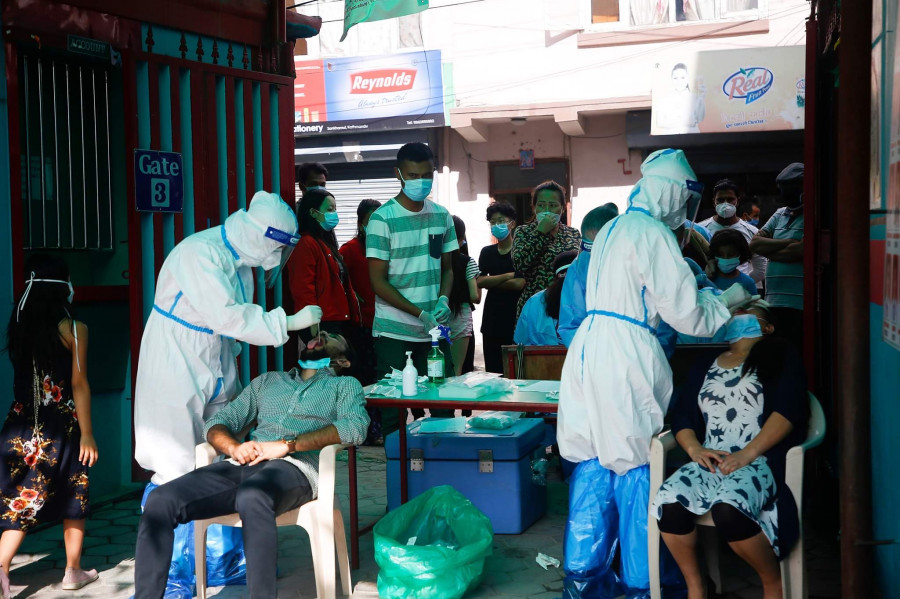Editorial
Assess and address risks
The Covid-19 situation could worsen when the Dashain traffic picks up in a fortnight from now.
Covid-19 infections in Nepal are at their peak and rising. As of Tuesday afternoon, there were 66,632 infections and 429 coronavirus-related deaths reported in the country since the pandemic began. But the Oli administration continues to downplay the Covid-19 situation despite the growing number of cases and deaths. Meanwhile, the Ministry of Health and Population continues to make reckless decisions that increase the risks for citizens and those serving in the frontlines. It seems, there is little effort or intent to flatten the curve or ensure that people’s lives are not endangered.
Given the slippery situation we are in, risks have escalated, to say the least. However, instead of expanding tests and tracing susceptible contacts, the government has failed to make any headway based on empirical evidence. It has even failed to initiate a seroprevalence survey while it continues to deny community transmission. Amid all this failure, restrictions, by and large, have been lifted with ‘strict safety protocols’ to be followed while there is little monitoring if the government orders are being adhered to.
In the lack thereof, epidemiologists and infectious disease doctors fear that the public is at greater risk of being infected especially as the Dashain festival is just around the corner, and all long-haul public transportation including domestic aviation has resumed. Designated parking areas and public transportation stops along the routes have also gone back to becoming crowded, which further increases the risks of people contracting the virus through droplets or contaminated surfaces.
Multiple studies on the virus have warned that there is a risk of airborne transmission, which could have dire implications if physical distancing guidelines are not followed. Researchers at the Massachusetts Institute of Technology have discovered that droplets can travel as far as 8 metres. In Wuhan, China, researchers have highlighted that the virus could remain afloat even after the carrier had left the bus. According to the researchers, the virus can linger in the air for at least 30 minutes and travel up to 4.5 metres. Another study across 120 cities in China has shown that one out of three outbreaks involved public transportation.
The government cannot turn a blind eye to these scientific findings or bow down to pressure from various quarters while making decisions that directly affect people’s lives. In the capital and major cities and towns across the country, we are already seeing public vehicles failing to comply with health and safety protocols that allow only one passenger per seat. Epidemiologists fear the situation could worsen when the Dashain traffic picks up in a fortnight from now. With increased public mobility, the virus could also spread to all parts of the country, and there is little public confidence that the safety protocols will be enforced.
Risks run equally high on board an aircraft where the chance of disease transmission within confined spaces has been found to be affected by ventilation and distance between passengers. The government has backed down from its earlier decision and allowed domestic airlines to operate at full capacity while a negative PCR test report is not mandatory. How can we screen for asymptomatic cases with only a temperature reading and a self-declaration form at the airports? Does this not put passengers at risk when scientific modellings and recent cases have already shown that a carrier can infect people seated around them through droplets?
These Covid-19 risks must be assessed and addressed urgently to ensure public safety.




 13.12°C Kathmandu
13.12°C Kathmandu














